Historic Nottingham - Part 2 - Brewhouse Yard Museum
w/e 18 March 2007
All this week's pictures were taken
with a Kodak DX6490
Following one of Malcolm Sales' "100 Walks In
Nottinghamshire" Part 2 of this occasional series looking
at Historic Nottingham takes us from Castle Road into Brewhouse
Yard and the Museum of Nottingham Life.
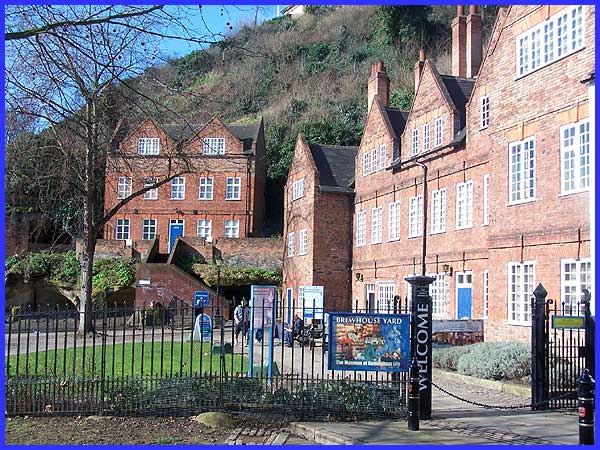
The museum is housed in five seventeenth century cottages in
Brewhouse Yard. There were once twenty houses in the area and
it is recorded that it was a thriving community with, at its
peak, over 120 people living here. These five houses now have
interconnecting doors and the exhibits spread over all three
floors. Entry is gained via a small shop where joint tickets
for the castle and the museum may be purchased along with many
souvenirs and keepsakes to commemorate a visit.
|
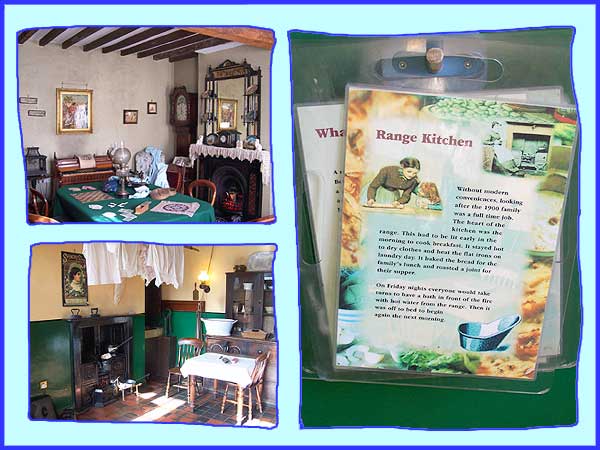
On the ground floor there are a couple of rooms depicting life
in the early 1900s. The "hands on" museum encourages
visitors to touch and feel many of the exhibits and plastic covered
sheets are strategically placed giving lots of extra information.
The one pictured titled "Range Kitchen" which refers
to the room pictured bottom left above says that "On Friday
nights everyone would take turns to have a bath in front of the
fire with hot water from the range." Whilst this may not
be a surprise to people of a certain age, it is probably an eye-opener
to many of the youngsters in school parties that visit the museum.

The ground floor of the converted cottages also has a room laid
out as a grocer's shop from the Edwardian period with old packages,
packets and tins. Notices advertising such things as Ling's Tapioca
Flakes, Scotch Oatmeal, Chicken and Poultry Groats and Crawford's
Ginger Nuts at only 7d a pound (that's about 3p in today's money)
vie for attention with milk churns and old fashioned weighing
scales. In an oak beamed back room there is a display about the
fabric of the buildings and information panels reveal that tests
on the beams have resulted in them being dated variously from
1565 until 1701.
|
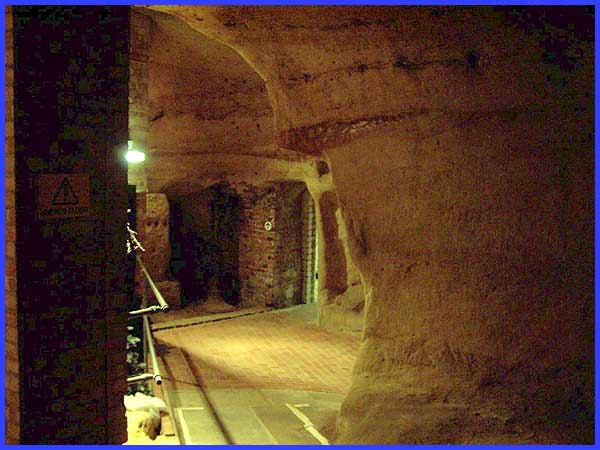
A door leading out of the back of the building does not go as
you would normally expect, into the open air outside but directly
into low passages and caves in the sandstone cliff behind.

Even here there are numerous museum exhibits including an example
of an Anderson Shelter. Shelters like this were built here during
the Second World War and a photo panel records the visit to Nottingham
in January 1939 of Sir John Anderson after whom the shelters
were named. Walking through the caves and more displays from
the war years including washing machines and cookers, the return
to the museum building is achieved by passing an old sheet strung
across an alcove bearing the words "A woman's work is never
done".
|
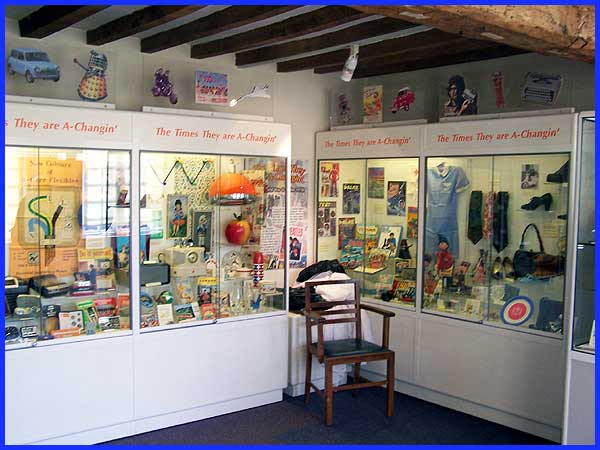
Climbing the stairs to the second storey takes us into a more
recent era with several displays, one of which has memorabilia
from the 1960s under the heading "The Times They Are A-Changin'".
Mini cars, Daleks, kipper ties, books, toys and games not forgetting
The Beatles can all be found in a packed display cabinet. 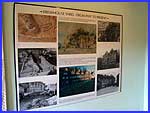 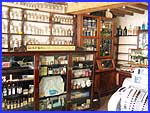 There is also a wall panel (left) showing
how the museum site has developed over the years and another
room has been set out as a Victorian dispensing chemist's shop
(right) with all manner of pills and potions - quite appropriate
when you consider the county was the birthplace of John Boot
(1815-1860) who founded Boots the Chemists and whose son Jesse,
later to become Lord Trent, turned it into a national concern. There is also a wall panel (left) showing
how the museum site has developed over the years and another
room has been set out as a Victorian dispensing chemist's shop
(right) with all manner of pills and potions - quite appropriate
when you consider the county was the birthplace of John Boot
(1815-1860) who founded Boots the Chemists and whose son Jesse,
later to become Lord Trent, turned it into a national concern.
|
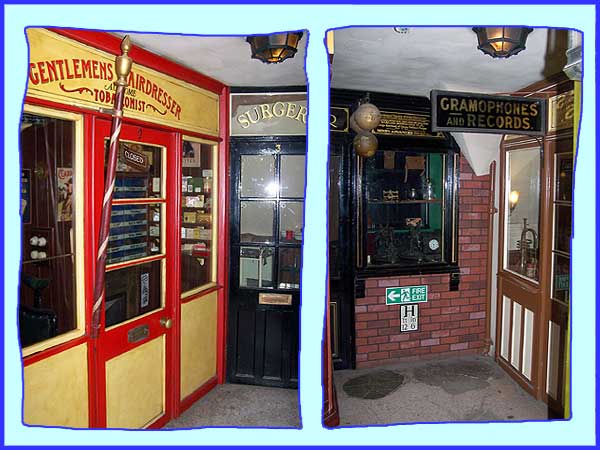
Another flight of stairs takes us to the top floor and here there
are more shops but these have been recreated to show how they
would have looked in the 1920s at street level from the outside.
A party of young schoolchildren was being shown round whilst
we were there by a lady in period costume. The children too had
been given smocks and tunics to wear and it was obvious that
they were thoroughly enjoying the experience. Learning for them
was fun but the museum caters for all ages and a visit is highly
recommended. I have only scratched the surface in these few images
- there is much more to be seen.
|
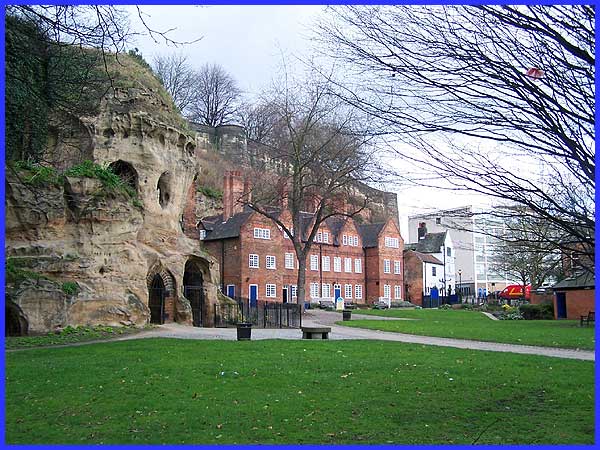
But now it is time to move on and make our exit onto Castle Boulevard
from where, looking back we can see the Trip To Jerusalem pub
towards the right and more caves and passages in the sandstone
on the left. One of these marks the exit from Mortimer's Hole,
a manmade passage named after Roger Mortimer, the Earl of March
and lover the then Queen of England, Isobel. Mortimer was implicated
in the death of Edward II whose son Edward III planned a daring
raid on the castle via this passage that took place on 19th October
1330. Mortimer was captured and taken to London, his life coming
to an end on the 30th of November when he was hung, drawn and
quartered. His remains were left on Traitors Gate but his name
lives on beneath Nottingham Castle.
|

